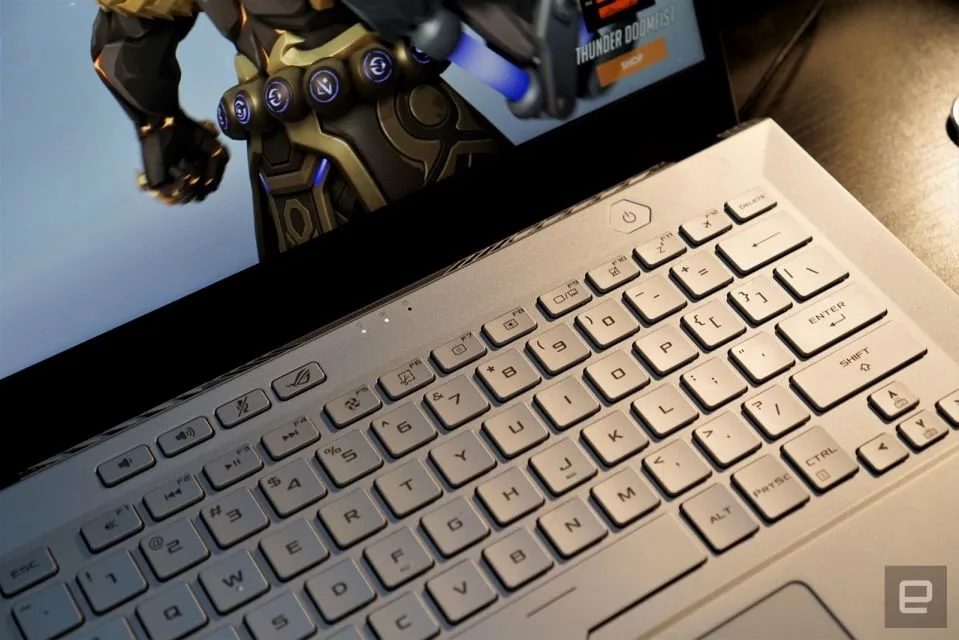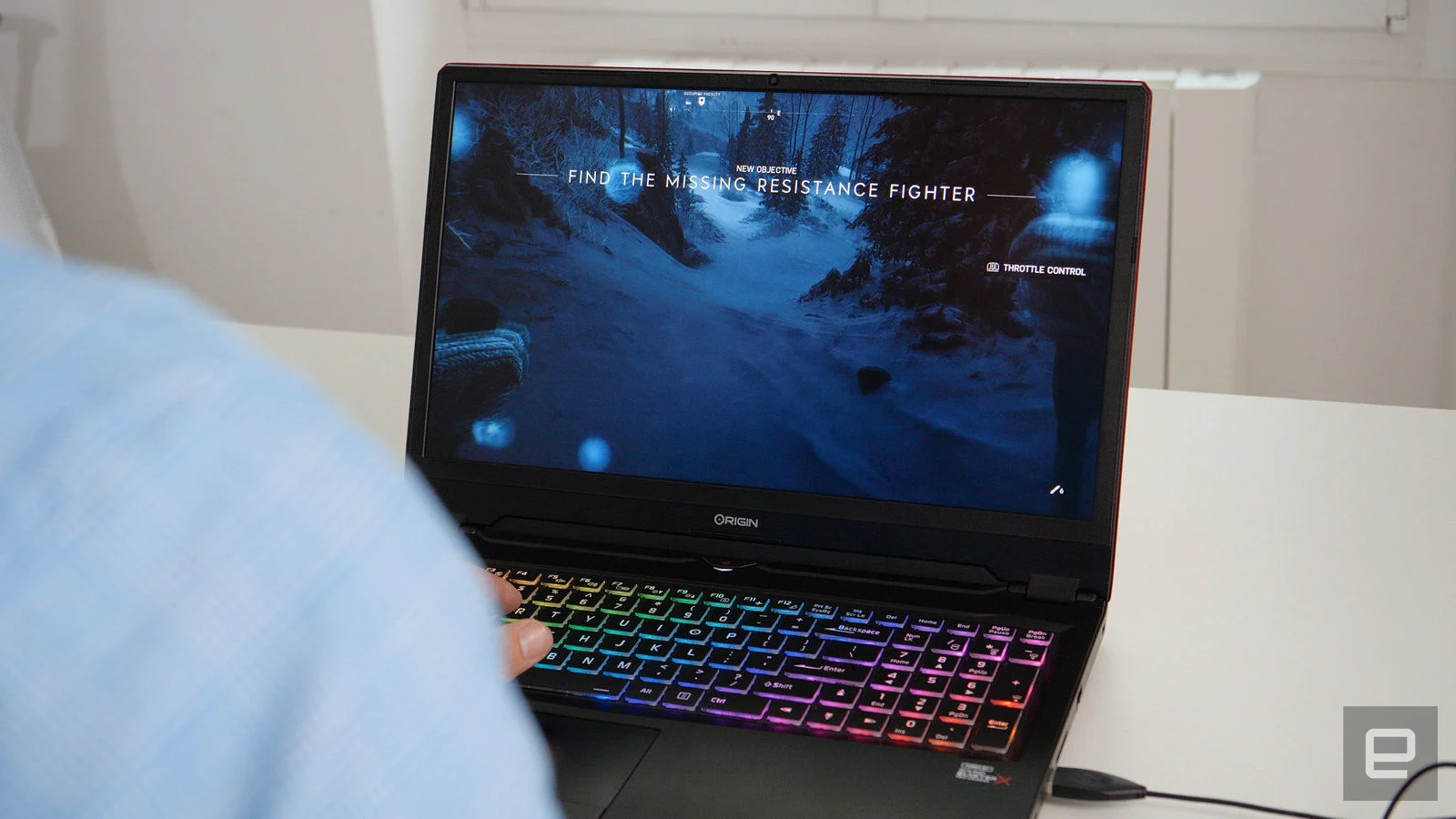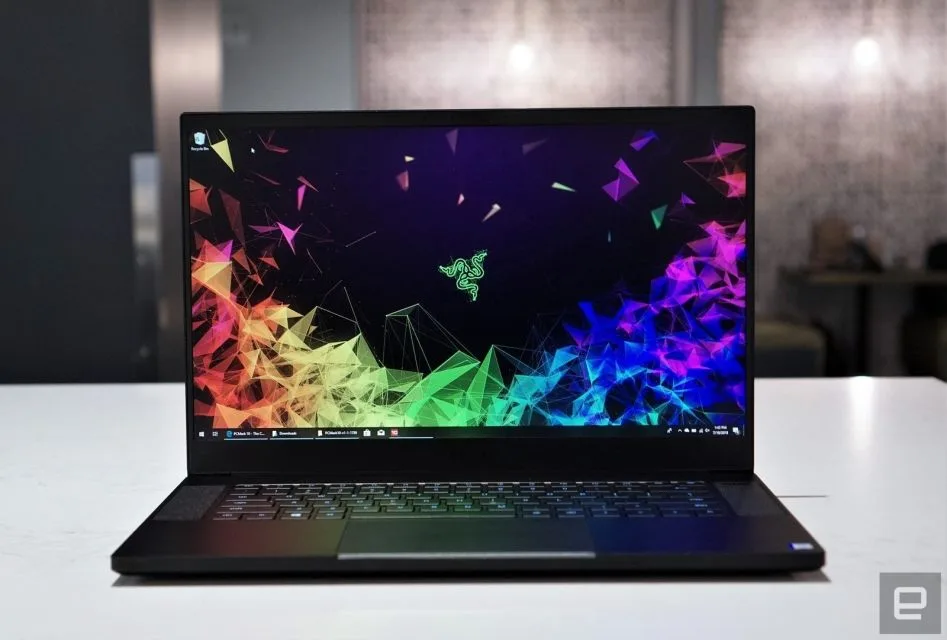For a few years now, gaming laptops have been some of the most intriguing PCs around. They’ve gotten thinner and lighter, naturally — but they’ve also become vastly more powerful and efficient, making them suitable for both work and play. They’ve adopted some bold innovations, like rotating hinges and near desktop-like customizability. Gaming laptops are where PC makers can get adventurous.
- $1,015 at Amazon
ASUS ROG Zephyrus G14
- $784 at Amazon
Dell G15 5520 Gaming Laptop
- $2,104 at Amazon
Razer Blade 15 Gaming Laptop
- $2,373 at Amazon
Acer Predator Triton 500 SE Gaming Laptop
- $2,000 at Dell
Alienware m18
If you’re a professional in the market for a beefy new computer, and you like to play a few rounds of Apex Legends on occasion, it may make more sense to go for a gaming notebook instead of a MacBook Pro-like workstation. You’ll still get plenty of power for video encoding and 3D rendering, plus you may end up paying less. We'll help you figure out which is the best gaming laptop for you, from budget options like the Dell G15 to premium notebooks like the Razer Blade 15 and everything in between.

What's your budget?
Your laptop buying journey starts and ends with the amount of money you're willing to spend. No surprise there. The good news: There are plenty of options for gamers of every budget. In particular, we're seeing some great entry-level PC gaming choices under $1,000, like Dell's G15 lineup. A cheap gaming laptop in this price range will definitely feel a bit flimsier than pricier models, and they'll likely skimp on RAM, storage and overall power. But they should be able to handle most games in 1080p at 60 frames per second, which is the bare minimum you'd want from any system.
Things get interesting when you start looking at the best gaming laptops in the mid-range space, with prices at $1,000 and higher. At that point, you'll start finding PCs like the ASUS Zephyrus ROG G14, one of our favorite gaming notebooks. In general, you can look forward to far better build quality than budget laptops (metal cases!), improved graphics power and enough RAM and storage space to handle the most demanding games. These are the gaming machines we'd recommend for most people, as they'll keep you gaming and working for years before you need to worry about an upgrade.
If you're willing to spend around $1,800 or more, you can start considering more premium options like Razer's Blade. Expect impeccably polished cases, the fastest hardware on the market, and ridiculously thin designs. The sky's the limit here: Alienware's uber customizable Area 51m is an enormous beast that can cost up to $4,700. Few people need a machine that high-end, but if you're a gamer with extra cash to burn, it may be worth taking a close look at some of these pricier systems.

What kind of CPU and GPU do you want?
The answer to this question used to be relatively simple: Just get an Intel chip with an NVIDIA GPU. But over the last few years AMD has stepped up its game with its Ryzen notebook processors, which are better suited for juggling multiple tasks at once (like streaming to Twitch while blasting fools in Fortnite). Intel responded with its impressive 12th and 13th-gen chips, but it’s nice to have decent Ryzen AMD alternatives available, especially since they’re often cheaper than comparable Intel models.
When it comes to video cards, though, AMD is still catching up. Its Radeon RX 6000M GPU has been a fantastic performer in notebooks like ASUS’s ROG Strix G15, but it lags behind NVIDIA when it comes to newer features like ray tracing. (We’re still waiting to test AMD’s new Radeon 7000 series mobile graphics.) At the very least, a Radeon-powered notebook can approach the general gaming performance of the NVIDIA RTX 3070 and 3080 GPUs.
If you want to future-proof your purchase, or you’re just eager to see how much better ray tracing can make your games look, you’re probably better off with an NVIDIA video card. They’re in far more systems, and it’s clear that they have better optimized ray tracing technology. NVIDIA GeForce RTX GPUs also feature the company’s DLSS technology, which uses AI to upscale games to higher resolutions. That’ll let you play a game like Destiny 2 in 4K with faster frame rates. That’s useful if you’re trying to take advantage of a high refresh rate monitor.
You’ll still find plenty of laptops with NVIDIA’s older RTX 30-series GPUs these days, and they’ll still give you tremendous performance. But to be safe, it’s probably worth opting for the newer RTX 40-series systems, since they support the newer DLSS 3 technology and offer a wealth of performance upgrades. (If you’re looking out for the best deals, you can probably find some killer RTX 3070 laptops out there.) The entry-level RTX 4050 is a solid start, but we’d suggest going for a 4060 or 4070 if you’re aiming to maximize your framerates on faster screens. The RTX 4080 and 4090 are both incredibly powerful, but they typically make systems far too expensive for most users.
It’s worth noting that NVIDIA’s mobile GPUs aren’t directly comparable to its more powerful desktop hardware. PC makers can also tweak voltages to make gaming performance better in a thinner case. Basically, don’t be surprised if you see notebooks that perform very differently, even if they’re all equipped with the same GPU.

What kind of screen do you want?
Screen size is a good place to start when judging gaming notebooks. In general, 15-inch laptops will be the best balance of immersion and portability, while larger 17-inch models are heftier, but naturally give you more screen real estate. There are some 13-inch gaming notebooks, like the Razer Blade Stealth, but paradoxically you'll often end up paying more for those than slightly larger 15-inch options. We’re also seeing plenty of 14-inch options, like the Zephyrus G14 and Blade 14, which are generally beefier than 13-inch laptops while still being relatively portable.
But these days, there is plenty to consider beyond screen size. For one: refresh rates. Most monitors refresh their screens vertically 60 times per second, or at 60Hz. That's a standard in use since black and white NTSC TVs. But over the past few years, displays have evolved considerably. Now, 120Hz 1080p screens are the bare minimum you'd want in any gaming notebook — and there are faster 144Hz, 240Hz and even 360Hz panels. All of this is in the service of one thing: making everything on your display look as smooth as possible.

0 Comments